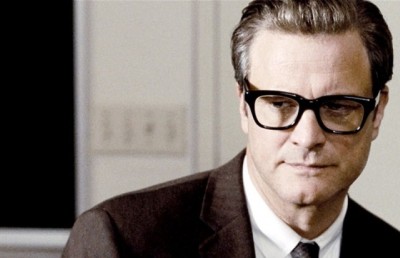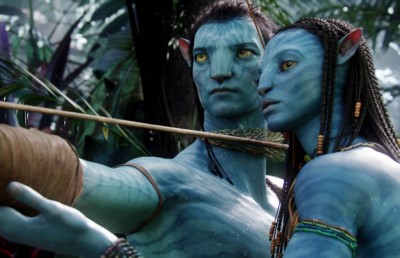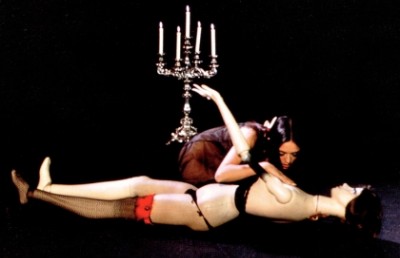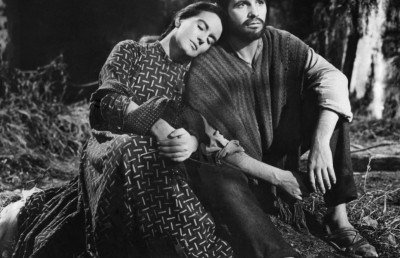Wristcutters: A Love Story. An Anti-Sartrean Tale?
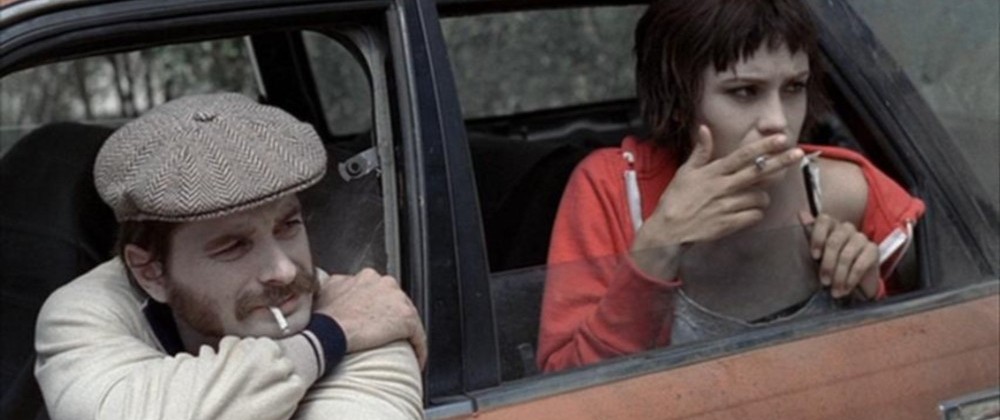
French philosopher Jean-Paul Sartre (1905-1980) achieved such popularity with his writings during his lifetime that one can still hear the echoes of the period (1940s through the 1960s) when his words drew enormous crowds. Sartre remains one of the most well-known icons in his field. In the 1940s, while creating a movement called “Existentialism” along with contemporaries such as Albert Camus (1913-1960), Sartre also dared to begin developing what would become a solid interface between philosophy, literature, and the arts by critiquing all three disciplines and by engaging with his society politically, thus emphasizing the need to be mingled in the literary milieu in order to become an accomplished philosopher. As critic Christine Daigle explains about Sartre’s background:
The picture that emerges from this necessarily incomplete review of Sartre’s works is that of an intellectual who grasped everything within his reach. Talented and with a voracious mind, he devoted himself to his writing. He was a total intellectual, in that his activity was not confined to one realm or style. He was fully committed and believed that, as a writer, he had an important social role to play. (10)
I propose employing Sartre’s play Huis Clos (No Exit) to analyze a contemporary independent American film Wristcutters: A Love Story (2007), directed by Goran Dukic and based on Etgar Keret’s short novel Kneller’s Happy Campers. This movie’s creation of a world inhabited only by suicidal people sharing their miseries –for there is no smiling in this gloomy, arid land– can be compared to Huis Clos, a play by Jean-Paul Sartre where three characters meet, as in the film, and find themselves in a quest to resolve their situation in a specific afterlife context. Sartre’s play introduces Inès, who was murdered by her lover; Garcin, a deserter who dreamed of becoming a pacifist; and Estelle, whose desire stemmed from pleasing men and being loved. In the film by Goran Dukic, three characters embark on a road trip in search of protagonist Zia’s lost fiancée Desiree, and for “the people in charge,” with whom Zia, his Russian friend Eugene and Mikal, a hitchhiker they picked up, want to speak.
There is little doubt that the film is reminiscent of Sartre’s theatrical tale Huis Clos. In Sartre’s play the author presents three characters: Garcin, Inès, and Stella, who meet in an estranged place and must cohabit with each other without having been offered any alternatives. The choice of freedom is one of the fundamental Sartrean concepts, providing the human being with the possibility of being or doing whatever he/she aspires to become in the world. Also in the forefront here is the Sartrean term pour-soi (for itself), underscoring the power of the person who finds herself / himself at stake in a huis clos, i.e. in a no exit situation. [1] According to Sartre, “most human individuals would like nothing better than to avoid having to make choices and, thus, abandoning their liberty, to be at rest, or, in other words, to be passive objects. However, since they are alive and conscious, they must keep on being part of the pour-soi” (Hardré and Daniel xi). Christine Daigle summarizes the play as follows:
In the play No Exit (1944), three characters arrive after their deaths as prisoners of a room in the afterworld. It appears that they have the capacity of spying on what happens on Earth. Garcin listens to a conversation about him among his friends on Earth and is unhappy to find out that they now think of him as a coward. […] Inès, another character in the play, provokes him and he says: I died too soon […] to which she replies: “One always dies too soon –or too late. And yet one’s whole life is complete at that moment, with a line drawn neatly under it, ready for the summing up. You are your life, and nothing else.”(50-51)
The building of a life based upon freedom and fluidity does not seem to apply to the Huis Clos system at first, though there is always a freedom of choice in whatever situation one encounters with the others in any milieu, even if this is a hell with no windows, or doors that open, in conclusion, no exit –as in the English translation title of the play. In Sartre’s Huis Clos, the characters are forced to bear the others’ presence, tastes, distastes, likes, dislikes, loves, and hates. It takes some time for them to realize that they are not going to meet other people and that they are stuck for good in this hole, which readers recognize as some sort of fictional hell without a god overseeing it, only one’s typical worst nightmare in the form of two other people. This situation will very likely awaken perspectives on what one does or does not want to happen. Therefore this hell is, above all, not the typical religious idea of a Christian hell. According to Sartre, hell is primarily the others, thus his famous last sentence of the play, “Hell is other people”: “L’enfer, c’est les autres” (91). This situation demonstrates the impossibility of engaging in activities or conversations without being observed by others [2] – in the case of the play Huis Clos, the two characters who are also in the hell–prison. One can add the idea proposed by philosopher Slavoj Žižek to the concept of the other human serving as an individual’s hell:
The neighbor remains an inert, impenetrable, enigmatic presence that hystericizes me. The core of this presence, of course, is the Other’s desire, an enigma not only for us, but also for the Other itself. For this reason, the Lacanian “Che vuoi?” is not a simply inquiry into “What’s bugging you? What is it in you that makes you so unbearable, not only for us but also for yourself, that you obviously do not master?” (140-41).
Here Žižek underscores the uselessness of trying to understand our “neighbor,” or, in Sartrean terms, this forever impenetrable “other.” The radical act in Wristcutters: A Love Story is learning how to tolerate the others. In Sartre’s hell, as well as in the film, the others are always present, and our fundamental freedom of being thrown into the world has nothing to do with who we meet or who we choose as friends or acquaintances. (Mis)understanding the other suffices to fill a room (or another world) with desperate, hysteric, and lifeless people. I will argue in regard to the film that there are always exceptions to the Sartrean rule, some of them revealed to be unexpected.
The independent movie Wristcutters: A Love Story initially depicts the story of a young man named Zia, who is profoundly depressed. In the first scene viewers see Zia in bed, inert, apparently unable to move or perform any activity except listening to Tom Waits’ song “Dead and Lovely” ad infinitum. Even this activity is a passive one. Listening to a lost-love song –“she’s dead, forever dead, so lovely dead,” in the words of Tom Waits – Zia decides to act out: to kill himself by cutting his wrists. However, before he ends what appears to be his miserable life for good, he feels the need to clean, vacuum, dust, and organize his apartment, displaying a last minute euphoric desire to actually do something; depressed people often cannot bear to do anything. [3] Already the spectator is wondering what to expect, since the next scene shows Zia leaning over the just-cleaned sink, now full of blood, and then losing consciousness. In the background of Zia’s bedroom, Tom Waits’s voice repeats “but she is dead, forever dead, so lovely dead, forever dead, dead, dead.” Here Zia brings into light the idea that, despite his dying, a lady named Desiree remains forever his profound object of affection. In fact, Desiree is not dead yet, but has only left Zia. Nevertheless, viewers eventually learn that she, too, took her life after Zia’s burial. The knowledge that Desiree is in the same afterworld for suicides propels Zia to initiate the search for her and, consequently, turns the film into a road movie. Thus even in his post-mortem process, Zia has one thing in mind: the search for his heroine, Desiree. There are allusions to myths such as the tale of Eurydice and Orpheus, where the hero journeys fruitlessly through Hades. Yet in these myths the hero is not yet dead, but Zia is. My purpose in this essay, aside from a brief comment on Sartre’s Huis Clos, is to analyze Wristcutters in light of the philosopher’s and the filmmaker’s respective constructions of hell. My main task is to determine if the film presents a Sartrean hell or an Anti-Sartrean hell, based on the philosopher’s premise, “L’enfer, c’est les autres.” Is hell really the others in Wristcutters or is hell an objective opportunity to meet others who are not necessarily best friends, and to develop a special sort of friendship that appears easier than in the world of the living?

Once supposedly dead, Zia departs to what he initially shows his acquaintance of the ‘suicide’ place through his recently established connections, in which he will soon depart on the road-trip adventure mentioned above, except that in the other world, as Zia puts it, “Everything is the same [. . .] just a little worse.” Admitting the need to earn a living, Zia gets a job in a sordid-looking pizzeria that lends its name to the film’s international title, “Pizzeria Kamikaze.” The owner of the pizzeria is a type of bully, ready to inflict pain upon the frustrated Zia. Moreover, Zia shares a room with an intolerable Austrian man who always complains that he is out of cottage cheese, obliging Zia to go to the store and buy more. Once at the store, Zia meets Eugene, the Russian character whose friendship will lead both men on the road a la recherché of the lost desired girlfriend Desiree, a blond girl who left Zia for other life-living, innocuous moments. Eugene has his entire family in this other world, all of them suicides who reunited there: “Not every family is as lucky as we are,” Mama states at the dinner table, countering the Sartrean idea that “Hell is Others,” for Eugene’s family seems happy in their own misery. The Russian family spends time having luscious lunches accompanied by vodka and the mother’s plentiful advice. With Zia, viewers begin to understand that the inhabitants of hell are those who took their own lives. Zia befriends the family and quickly becomes best friends with Eugene. Later, Zia proposes the two of them leave town in search of Desiree. Seeing his friend’s hesitance, Zia asks, “you got anything better to do?” He therefore quickly convinces Eugene to depart on their adventure.
Once on the road, the two meet a hitchhiker named Mikal, who is searching for “the people in charge” to send her back to earth; she insists it is due to a mistake that she has ended up in the other world. Unlike the other livid characters, Mikal has hopes; she misses smiling, which no one seems to do in hell. This detail is taken from Huis Clos, where analogically there are no tears, nor can the eyes close. Both facts are a torture in themselves, one that is alleviated in the film, contrary to what happens in the play, in which the eyes cannot produce any tears, but rather remain eternally open, as Sartre puts it: “Garcin – Inutile. Ici les larmes ne coulent pas” [“Garcin, useless. Tears do not flow here.”] (57). In Wristcutters , it is the smiles that are missing, phenomenological facts that deny human beings their full expression. Inès, the lesbian character from Sartre’s play, underscores this lack of expression by gazing at the other that is not represented in their hell and by saying eloquently: “Je suis sèche. Je ne peux ni recevoir ni donner; comment voulez-vous que je vous aide? Une branche morte (…)” [“I am dry. I can neither give nor take; how do you expect me to help you? A dead branch.] (59).
At first the characters in Wristcutters seem very apathetic, but there are a few exceptions. Eugene, for instance, lives out his very contempt, at times even an euphoric life, with the prospective of his new friendships and with all his arrangement for his path through the new adventure with Zia and others he will meet on the road. However, even being on a road trip in bleak circumstances, Eugene manages to call his mother every day, sometimes more than once, showing he is not annoyed by, but rather enjoys the “mother symptom.” In other words, her attachment remains with Eugene forever, as if he were the prodigal son in the story. However, as the film progresses, viewers understand that Zia is the one who will make a return to our world, along with Mikal, who always has claimed to be in the wrong place. Even though Eugene rescued his younger brother from suicide when he was only ten years old –giving him a good slap on the face after convincing him to liberate himself from the ropes around his neck– Zia remains the hero of the story. During their trip, Zia, Eugene, and Mikal find a campground where all kinds of artists live. Kneller, a character played by Tom Waits, manages the camp. It is a place where miracles happen; people levitate, and one sees misplaced colors that define people and things, and a mute woman from the North Pole, Nanuk, sings in a special throat manner. All is possible as long as “you don’t care” for the miracle. Zia becomes obsessed with a desire to perform one of the miracles, and, exactly for this reason, nothing happens until the moment when he stops caring. Eugene falls in love with one of the singing women, and a strange relationship between Mikal and Zia begins to develop. Kneller asks Zia at a certain point, “Why don’t you tell her you love her?” in reference to Mikal, thereby awakening Zia’s own dormant and denied feeling. Signs that recall Sartre’s Huis Clos, such as NO EXIT, appear on the road when Mikal is about to be arrested and subsequently rescued from Zia, who pretends to be her brother. Being metaphorically paralyzed as though he is, Zia invites Mikal for another ride, which she refuses by saying she is going in another direction—an excuse, since the direction one travels does not matter in the context of finding “the people in charge.” It is of utmost importance that Eugene’s car has a black hole into which glasses, objects, and even the flowers meant for the lost Desiree fall through (or are thrown), disappearing. As Kneller’s miracle place approaches, Mikal is again with the two men, simulating the trio in Sartre’s play, but here there are two men and a woman, rather than two women and a man. The first miracle happens when Mikal turns on the lights of Eugene’s car, and they work, since up to this point both Zia and Eugene have experienced recurrent difficulties with the lights At Kneller’s place, a sign reading “Knellers’ Camping” alludes to the book on which the film is based. As the film progresses, Eugene, Zia and Mikal decide to stay in Kneller’s for a while, perhaps compelled to see the odd things happening and take comfort in meeting strangers. Mikal tells Zia all the things that she misses about life on Earth, and Zia pathetically claims not to miss anything except for the “feeling” he experienced with Desiree. In this context, Zia affirms, “I was happy at a time. Something about being here with you reminds me of that.” As their conversation and relationship deepens, Mikal clarifies that she died due to an overdose, not by suicide. She is full of life and wants to travel back to life. Later, she finally sees the people in charge, who realize that there has been a mistake. Mikal is quickly returned to Earth, leaving a sad Zia behind. Following Eugene’s departure to the North Pole with Nanuk, prefigured by a dream he had earlier, Zia throws himself in the car’s black hole. He awakens in a hospital bed and finds Mikal on the bed next to him, while his parents stand outside talking to the doctor. With an end that supports the possibility of establishing a relationship between Mikal and Zia, the film differs from Sartre’s play, which concludes with the brutal definition of the other as hell. All’s well that ends well in Wristcutters –both Zia and Mikal awaken and smile at one another– which proposes the experience of the other world as a means to renew one’s trust in the possibility of beginning anew.
Endnotes
1 In their preface to Huis Clos, Jacques André and George Daniel explain in detail Sartre’s concepts of life and death, including the idea of the “pour soi”. According to the critics, that idea appears when Sartre “speaks of the self, […] distinguishes the être-en-soi, the in-itself, from the être-pour-soi, the for-itself” (xi).
2 The notion of Other according to Sartre implies the acknowledging of one’s body and consequently objectification of oneself by the other’s gaze. According to Chritine Daigle: “[Sartre] thinks that the body emerges out of my encounter with an Other who objectifies me as an object. The facticity of my body, (…) is revealed to me via the look of the Other. (…) It is as an object that I appear to the Other; my encounter with the Other is that of my body with his. (…) Sartre says there is an unabridgeable distance between the for-itself and the Other: the body is that through which I meet the Other, but at the same time it is an obstacle as it prevents me from attaining the Other’s consciousness.” (72-73).
3 We are conceptualizing depression according to the Oxford Dictionary of Psychology, that states: “A mood, state of sadness, gloom, and pessimistic ideation, with loss of interest or pleasure in normally enjoyable activities, accompanied in severe cases by […] feeling of worthlessness or guilt, diminished ability to think or concentrate, or recurrent thoughts of death or suicide” (202).
Works Cited
“Depression.” Oxford Dictionary of Psychology. 3rd ed. 2009. Print.
Daigle, Christine. Jean-Paul Sartre. New York: Routledge, 2010. Print.
Sartre, Jean-Paul. Huis Clos. Ed. and Intro Jacques Hardré and George B. Daniel. New Jersey: Prentice-Hall, 1962. Print.
Wristcutters: A Love Story. Dir. Goran Dukic. Perf. Patrick Fugit, Abraham Benrubi, Shannyn Sossamon, Shea Whigham, and Leslie Bibb. No Matter Pictures, 2006. Film.
Žižek, Slavoj. “Neighbors and Other Monsters: A Plea for Ethical Violence. Three inquiries in Political Theology.” The Neighbor. Ed. Slavoj Žižek, Eric L. Santner, and Kenneth Reinhard. Chicago: The U of Chicago P, 2005. 134-190. Print.


